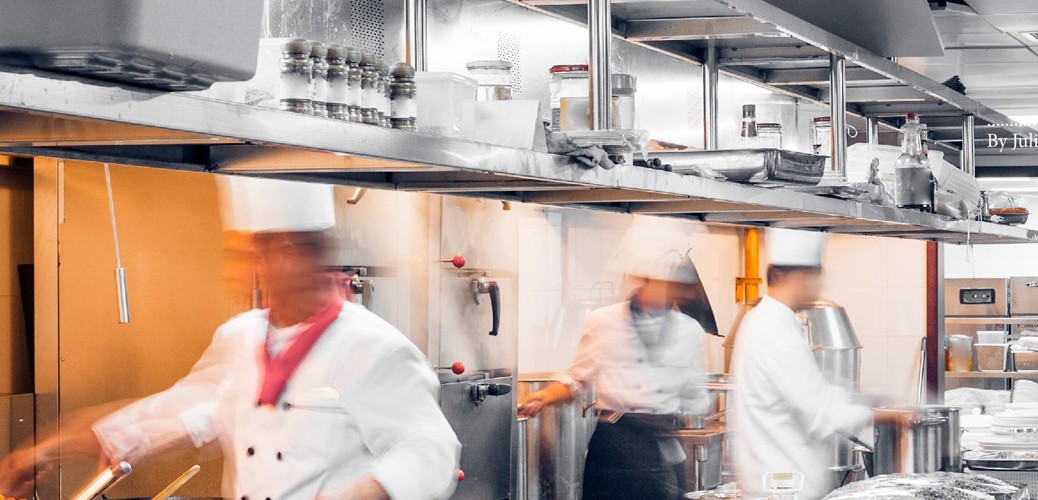Any business owner or worker in the food and drinks industry knows how critical storage temperature is. It’s crucial for manufacturers and suppliers to the industry too: you need to store particular foods, drinks and products at specific temperatures. Food service industry regulations demand safe commercial refrigeration for a reason.
Let’s explore some of the temperatures for safe commercial refrigeration. We’ll review a few of the most popular types of refrigerators and freezers, the reasons for industry regulations, and how temperature regulations differ between countries. If you’re unsure about any refrigeration temperatures, KES Facilities are always here to help.
Different Types of Commercial Refrigerators and Freezers
Although there are several different types of commercial refrigerators and freezers, they have a few things in common. First of all, none of them look like the refrigerators in your home! But they’re also designed for meticulous temperature control, bulk storage, and ease of access.
Walk-In Refrigerators
This one’s in the name! These refrigerators are some of the largest ones on the market. It’s a good idea to store boxed goods, juices, and liquids inside walk-in refrigerators. If your business has a quick product turn-around and stock moves fast, then this type of refrigerator is worth the investment.
Reach-In Refrigerators and Freezers
On the other hand, reach-in refrigerators are better suited to back-of-house storage. There can be multiple sections and the doors are normally either glass or solid. These allow you to organise your stock and quickly locate the products you need. Since the door is open for less time, they tend to be more energy efficient as well.
Display Refrigerators
These types of refrigerators are designed with a much more unique intent. When used correctly, they should make fresh produce look much more attractive. They can be either serve-over-counter, or counter-top display. Whether or not they have a glass partition that keeps them protected, customers will be able to see and select exactly what they want.
Why Are There Legal Temperatures for Safe Refrigeration?
The temperature at which you store your food or drink can have a huge influence on the condition of your stock. Moisture level, nutrition level, taste, appearance and, most importantly, hygiene are all determined by the temperature of your refrigerator or freezer.
That temperature is so crucial, in fact, that refrigeration temperatures are regulated. The Food Safety (Temperature Control) Regulations 1995 (or the Food Hygiene Regulations 2006) state that certain foods must be refrigerated below 8°C in the United Kingdom. It’s recommended that most refrigerators operate between 2°C and 5°C.
Freezers are slightly different. There are no defined temperatures, but freezers are expected to have a temperature of -18°C.
The following foods must be stored at a regulated temperature:
- dairy products
- cooked products
- cured fish (which is not shelf-stable)
- cured meat (which is not shelf-stable)
- prepared ready-to-eat foods
- uncooked pastry and dough products
These regulations have been established to reduce the chance of harmful bacteria growing and spreading within food. Food spoilage is a common problem due to poor refrigeration, and food poisoning can be a direct result of refrigeration at the wrong temperature. Other more serious illnesses such as E.coli can also spread as a result.
The general requirement of the Food Hygiene Regulations in the United Kingdom is as follows:
“Raw materials, ingredients, intermediate products and finished products likely to support the reproduction of pathogenic micro-organisms or the formation of toxins are not to be kept at temperatures that might result in a risk to health. The cold chain is not to be interrupted. However, limited periods outside temperature control are permitted, to accommodate the practicalities of handling during preparation, transport, storage, display and service of food, provided that it does not result in a risk to health…”
Do Temperatures Change Depending on the Country?
Everything we’ve mentioned so far applies to food regulations in the United Kingdom. The temperatures for food storage in refrigerators and freezers around the world vary. In certain locations, there are no regulations at all. In the majority of places, however, the refrigeration temperature of food is strictly controlled.
Safe Commercial Refrigeration Tips
Sometimes, the correct storage temperature isn’t obvious. That being said, there are a few handy tips you can follow to ensure that you’re storing food in the safest way possible.
Foods that need to be refrigerated should be stored at the earliest opportunity. The “two-hour rule” is usually a good routine to follow. If a food normally requires refrigeration (such as seafood, meat, or poultry), then try not to leave it at room temperature for more than two hours.
The information label on your food will normally let you know the best storage method. When you do store that food, make sure that the air inside your refrigerator has space to circulate: overcrowd it and it won’t stay fresh.
For any food that’s beginning to rot or ‘go-off’, it’s always a good idea to dispose of it immediately. This reduces the likelihood of bacteria growing and spreading. Clean your hands whenever possible, and separate raw foods from cooked foods.
Stick to those tips, and you’ll be in a pretty good position for limiting the growth of harmful bacteria.
If you’re having problems with your current commercial refrigerator, or are looking to install a new system in your commercial kitchen, get in touch with us today to find out how we can help you.


